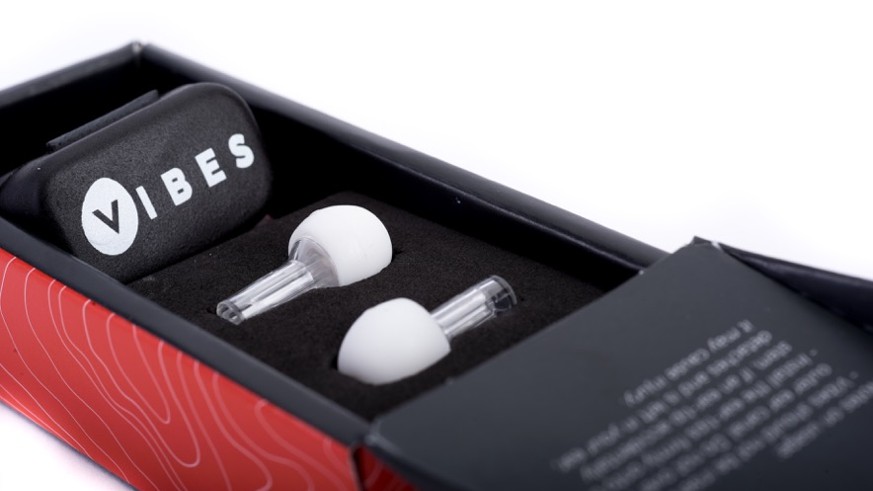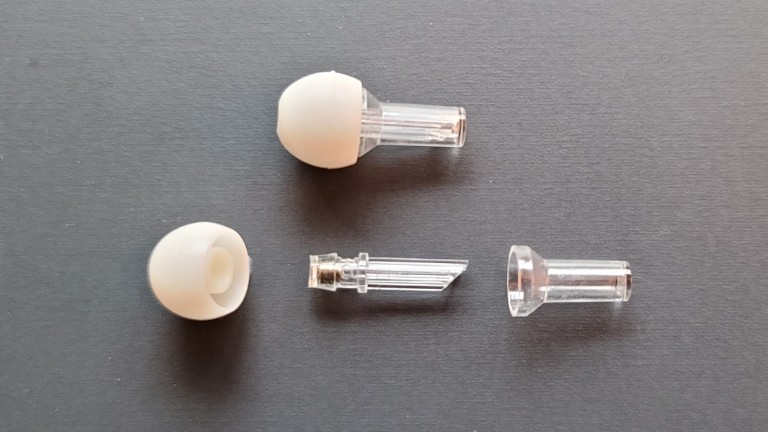
Vibes Novel Design Protects Motorcyclist Hearing
This article was reviewed and refreshed for accuracy on March 26, 2025.
Hearing is one of those senses we take for granted, so much so that we may not notice gradual changes. In fact, when we can’t hear someone or something it’s common to think the other person needs to speak up or the volume is too low. But it might just be that our own hearing is faltering. Riding without hearing protection can bring on hearing loss faster than we realize.
The team at Vibes designed unique earplugs to help motorcyclists lower their risk. We tested a pair of Vibes Hi-Fidelity earplugs on a long touring ride and then spoke with Jamie Sherwood, Business Development Manager at Vibes, to learn more about the product.

Reviews published on American Sport Touring are conducted independently and without bias. American Sport Touring does not accept compensation of any kind in exchange for product reviews.
Motorcycle Wind Noise Destroys Hearing
The Royal Society of Medicine studied hearing loss in motorcyclists and confirmed what many riders already know. That is, wind noise is louder and more annoying than engine noise. Their tests showed that a motorcyclist riding at 40 MPH wearing a full face helmet is exposed to wind noise measured 90 decibels. At 100 MPH that same rider experiences wind noise exceeding 110 decibels.
…as motorcycle development has led to quieter machines with radically improved performance, there has been increasing concern that riders are exposed to excessive noise through turbulent airflow around the helmet—so-called wind-noise.
Journal of the Royal Society of Medicine; January 2003.
But when do noise levels become unsafe? The United States Occupational Safety and Health Administration (OSHA) regulations provide a useful guide. According to OSHA, noise levels below 90 decibels are considered safe for sustained periods; however, as levels increase the safe exposure period quickly drops and by a significant amount.
Tests show that motorcyclists riding at highway speed experience wind noise exceeding 103 decibels. At that level per OSHA recommendations, riders should limit their day to less than 2 hours. At speeds over 100 MPH wind noise increases to more than 110 decibels. At that high level OSHA recommends limiting sustained exposure to no more than 15 minutes.
It comes as no surprise to experienced riders that wind noise is more than annoying it’s dangerous. As the day goes on, hours of riding without hearing protection increase fatigue and reduce concentration. On top of that, long term exposure can lead to tinnitus (constant ringing in the ears) and permanent hearing loss.
Combinations of helmet design, fairings, and windscreen positions are of little help, only lowering wind noise by 5 or 6 decibels. Clearly hearing protection is a must.
A Novel Earplug Design
Vibes began making earplugs in 2015 initially for concert goers. Unwilling to accept muffled sound, the team enlisted help from audiologists at the University of Minnesota. Together they created a novel design that mimics the ear canal in such a way as to reduce sound waves without altering the sound itself. In effect, Vibes “turn down the volume”.

The uniqueness of the design is obvious and sets Vibes apart from every other earplug on the market. An inner tube, cut at a 45° angle, sits inside an outer tube. Curiously the outer tube is capped leaving one to wonder how sound enters the ear at all. As it turns out, a small opening at the ear tip allows sound to enter the outer tube. It then reverberates into the inner tube and through a small acoustic filter before entering the ear canal. Leave it to audiologists to come up with something so ingenious.
Natural Sound Without the Noise
The effectiveness of Vibes earplug is measured by the degree to which they reduce noise as measured in decibels. Vibes, like all earplug manufacturers, follows the American National Standards Institute (ANSI) standard for noise reduction ratings (Measuring Noise Reduction in Hearing Protective Devices). ANSI noise reduction ratings provide a reliable way to compare the performance of earplugs from different manufacturers.
Tested according to ANSI methodology, Vibes reduce noise by 15 decibels. Under real-world conditions, on average, users should expect closer to 22 decibels. The difference is attributed to measuring noise reduction across the entire frequency spectrum and varying conditions.

Foam earplugs indiscriminately chop-off noise – harsh sounds, music, and the voices of fellow riders are all muffled in the same way. Foam is a very blunt instrument to a solve a complex problem; one that must balance eliminating unwanted and damaging noise with the need to maintain the hi-fidelity sounds one wants to hear.
Sound tubes at the heart of Vibes earplugs are designed to strike the right balance. Music, GPS instructions, and conversations are enjoyable and easy to understand. To appreciate how well Vibes work, imagine listening to the radio in a moving car with a window part way down, and then listening with the window rolled up. Background road noise is still there, but with Vibes it no longer drowns out the music.
Comfortable Under a Helmet
When it comes to earplugs, fit is paramount. A bad fit can allow noise to leak in around the earplug, and worse it can cause sound to appear unbalanced between left and right.
Vibes are sold with three interchangeable tips ranging in size from small to large. As a general rule, men find medium tips work best, while the small size fits most women. But that’s a general rule, and riders should try all three to be sure.

A correctly sized earplug fits into the ear canal and forms a complete seal. Sound volume in both ears should be balanced, that is one side should not be “noisier” than the other. Once fitted, the earplug should stay put. Moving one’s jaw to talk for example should not cause the earplug to wiggle loose. Proper sized tips are the secret here.
The second challenge after first finding a good fit is to prevent the earplugs from becoming dislodged under a helmet. Vibes unique sound tubes protrude from the ear just enough that without a good deal of care when putting on a helmet, they are likely to bump out of place. And that’s frustrating. We found that pulling outward on the helmet padding below the ear pockets will lessen this problem.
Once on, even with in-helmet speakers, Vibes do not put pressure on the ear and remain in place and comfortable throughout the riding day.
Inexpensive Protection
Vibes earplugs retail for $28.95 (that’s an on-going “sale price” direct from Vibes or Amazon at the time this article was published). That price includes the earplugs, three sizes of silicon rubber tips and a convenient carrying case. Comparable earplugs cost about the same.
The company provides a 30 day return policy and that’s it as far as warranties go. However, Vibes tells us their customer support team will work with customers to resolve problems such as providing replacement tips and the like.
Give Your Ears a Break
Motorcycle riders, particularly touring riders, are wise to take precautions to lower the risk of hearing loss. Vibes earplugs are an effective way to reduce noise without muffling music and other sounds. They take a little practice to put on and keep in place under a helmet, but the prospect of life with good hearing makes it well worth the effort.

Find out more about Vibes on the web (www.discovervibes.com) and at leading motorcycle retailers including Cycle Gear and Revzilla.
[placeholder text]
Your response is used by American Sport Touring only, we do not store or sell your information.
Please read our Privacy Policy.

by John DeVitis, Editor and Publisher
John DeVitis, Editor & Publisher of American Sport Touring, has spent years riding and writing with a focus on long-distance, performance-oriented motorcycling. His time on the road has revealed little-known routes across the United States and Canada, along with practical insights into the bikes, gear, and techniques that matter to sport touring riders. He draws on this experience, together with a background in digital publishing, to guide the editorial principles and clear vision behind American Sport Touring, delivering content riders can trust.




